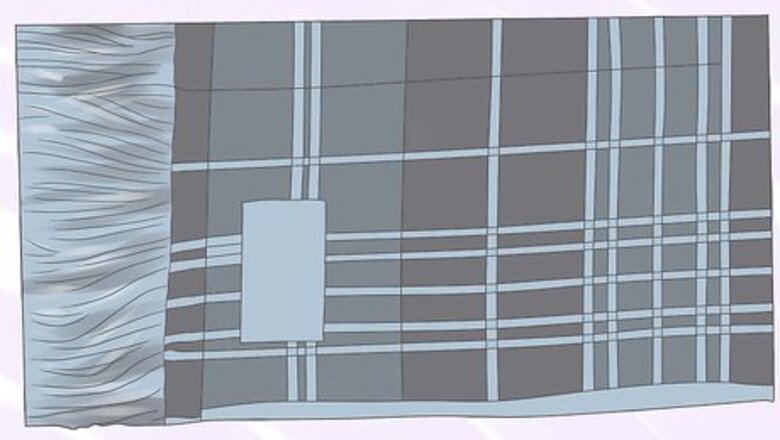
views
Before You Begin: Choosing the Right Tartan Pattern
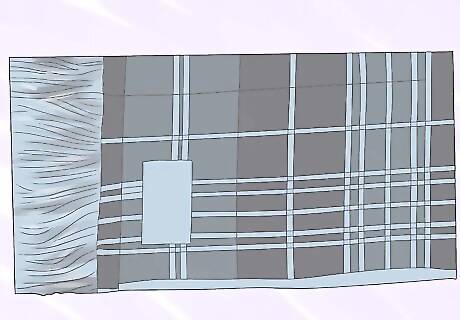
Choose a tartan by clan. Clans and large families of Scottish origin often have their own tartan patterns since the early 1800s. You can wear a clan pattern only if your family has current or ancestral ties to that clan. Find out which clan you belong to. As long as you know your surname or a surname connected to Scottish ancestors, you can search online for your clan name. You can search for your clan name here: http://www.scotclans.com/scottish-clans/clans-a-z/ Locate information about your clan. Once you know your clan name, you can look up more information about your clan in order to find out the tartan pattern or patterns associated with it. Look up your clan here: http://www.scotclans.com/scottish-clans/
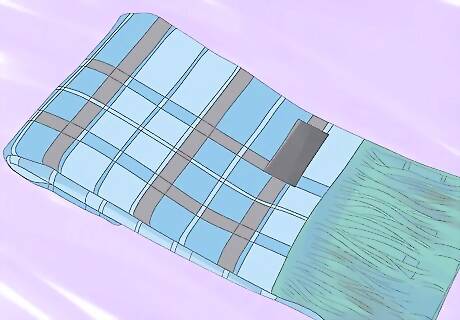
Pick a district tartan. District tartans are as old as clan tartans, if not older. There are district tartans spanning all of Scotland and many for areas all over the world, as well. You can wear a district tartan if you or your family come from that district. Look up Scottish districts here: https://www.scotclans.com/pages/scottish-district-tartans Look up other British districts here: https://www.scotclans.com/pages/district-tartans-of-the-british-isles Look up American districts here: https://www.scotclans.com/pages/american-district-tartans Look up Canadian districts here: https://www.scotclans.com/pages/canadian-district-tartans Look up any other district here: https://www.scotclans.com/pages/other-world-district-tartans
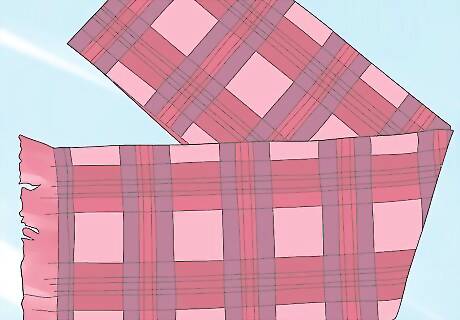
Opt for a regimental tartan. Some Scottish regiments and other regiments in various parts of the world have their own tartan patterns. If you area member of a particular regiment, or otherwise have a direct connection to it, that tartan would be a good choice for you.
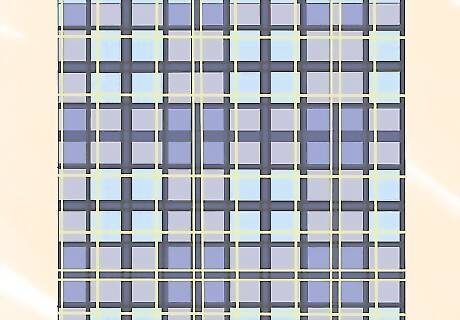
Stick with a universal tartan when all else fails. Universal tartan patterns can be worn by any person regardless of clan, district, or other identifying information. Older, more traditional options include Hunting Stewart, Black Watch, Caledonian, and Jacobite. Modern universal options include Scottish National, Brave Heart Warrior, Flower of Scotland and Pride of Scotland.
Measurements and Preparations
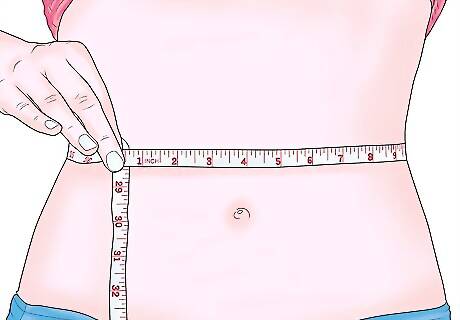
Take hip and waist measurements. Take a tape measure and measure the distance around both your hips and your waist. These measurements will determine how much material you need for the kilt. For women, measure around the thinnest part of your waist and the widest part of your hips. For men, measure around the upper edge of your hip bones and the widest part of your buttocks. When taking measurements, make sure that the tape measure is taut and parallel to the ground.
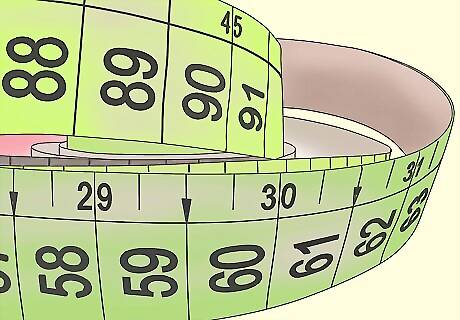
Determine the length of the kilt. A traditional kilt length will equal the length between your waist to your mid-knee. Use a tape measure to calculate this distance. If you plan to wear a wide kilt belt over your kilt, you should add 2 inches (5 cm) to this measurement for a high-rise waist.
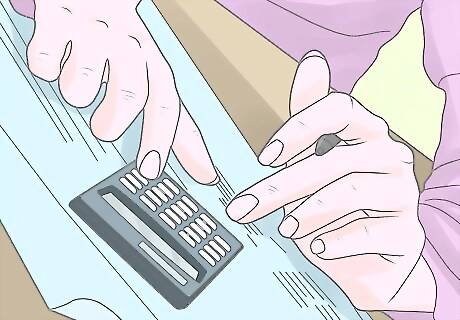
Calculate how much material you need. Since you need to form pleats out of your material, you will need a much greater length of material than the distance around your waist. Measure the width of the "sett" or pattern on the plaid or tartan material. Each pleat will consist of a full sett with 1 inch (2.5 cm) of exposed pleat. In other words, if the setts on your material are 6 inches (15.25 cm) wide, each pleat will use 7 inches (17.75 cm). Calculate the amount of material you need by multiplying half of your hip measurement by the amount of material needed for each pleat, and add this value to your full hip measurement. Add an additional 20 percent for additional pleating and centering to get your total number of inches needed. Divide this value by 72 to determine how many yards you need at double width.
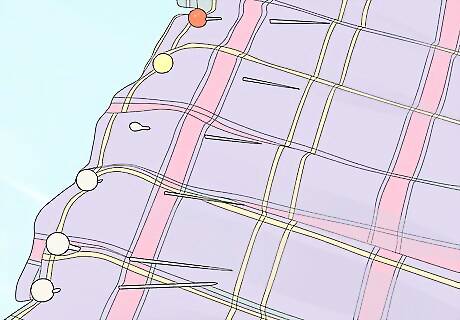
Hem the material, if necessary. Pin the top and bottom edges of the material down, making sure that you fold on the outer edge of a sett on both ends. Sew the hems in place with a straight stitch or use an anti-fraying adhesive liquid on the edges. This will not be necessary if the material has a finished edge at the top and bottom.
Making the Pleats
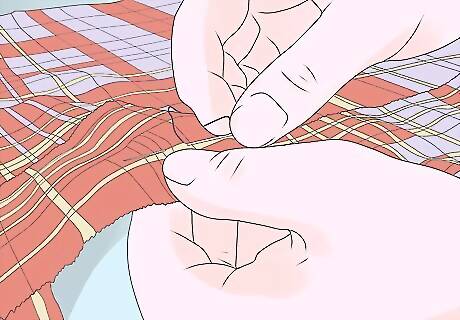
Make the first pleat. The first pleat will help center the material, so it will end up being a little different from the other pleats. Fold roughly 6 inches (15.25 cm) of material underneath itself at the right side of the material. Pin in place at the waist. On the left side of the material, make a pleat that encompasses two setts. Secure with a safety pin at the waist.

Measure out your pleats. On a piece of cardboard or durable cardstock, mark the width of one sett. Divide this marked area into three to eight equal parts. Use your best judgment to determine how many parts to divide the pattern into. The center section will peek through the pleat, so your center section should include an appealing part of the pattern.
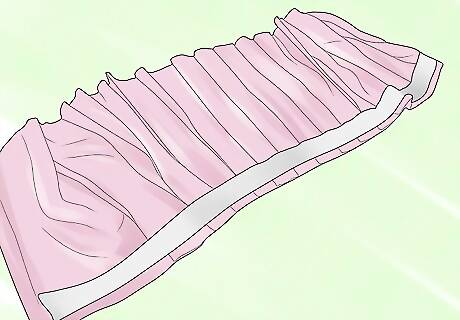
Pleat the remainder of the outside apron. Lay your cardboard guide above each sett as you fold it. Overlay the folded edge of each pleat over the part of the pattern that matches it in the set next to it. Secure in place with a safety pin. The cardboard guide should give you an idea of where to fold your first few pleats. After you begin folding, however, you may find that you do not need the guide since it should become a simple matter of matching the patterns together.
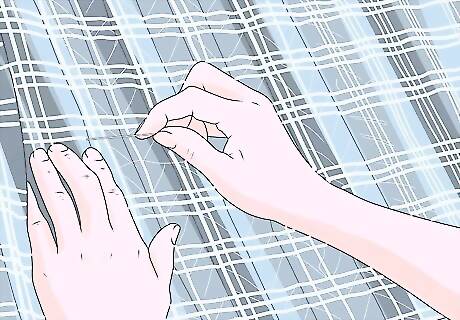
Baste the pleats along the bottom of the material. Use a running stitch to catch the edge of each pleat, holding it in place at the bottom of the material. You should do two rows of basting. The first running stitch should be about 1/4 of the length up from the bottom of the material, and the second should be about 1/2 of the length of from the bottom.
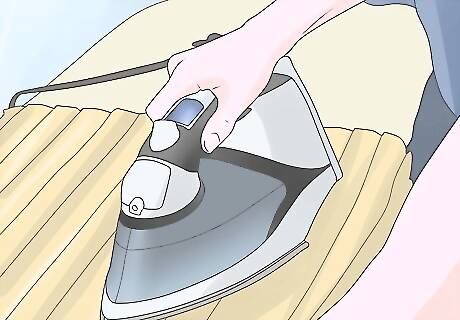
Iron the pleats flat. Use an iron with a steam setting to press the pleats in place, making them more durable and helping the pleats keep their form. Iron along each folded edge of each pleat. If your iron does not use steam, you can moisten a thin pressing cloth and place it over the pleats. Place this pressing cloth in between the iron and the material of your kilt and steam-press the pleats this way.
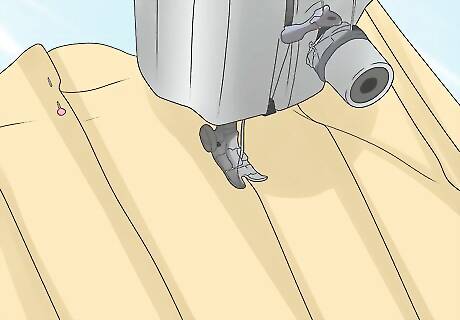
Stitch the pleats down. Sew across the entire width of pleats and down each pleat along the fold. Sew a straight stitch with your sewing machine across the top of your pleats, roughly 1 inch (2.5 cm) from the upper edge. Sew a straight stitch with your sewing machine across the folded, ironed vertical edge of each pleat. Only sew about 4 inches (10 cm) of material. Do not sew all the way down each pleat.

Trim the back of the pleats. This pleating method can result in excess material, so you can trim this material off. Cut away excess material from the section starting 1 inch (2.5 cm) above the hipline and ending at the waist. Do not cut away material from the first and last pleats.
Adding a Waistband
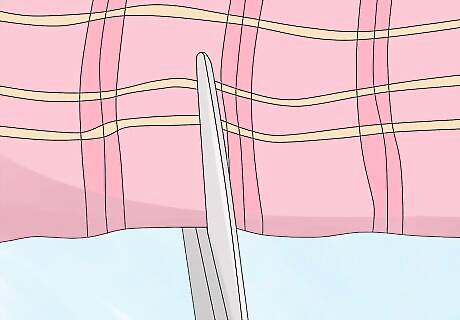
Cut a piece of matching material for the waistband. The material should be 5 inches (12.7 cm) wide and the length should match the length of the top edge of your kilt apron. This should be just slightly longer than your initial waist measurement.

Stitch the waistband to the top edge of the outside apron. Turn the bottom edge of the waistband material under 1/2 inch (1.27 cm). Sew this folded edge 1 inch (2.5 cm) from the top edge of the kilt apron, on the outside. The remaining width of the waistband should be folded over the top of the kilt. You do not need to finish it since the lining will cover the raw edges.
Adding the Lining
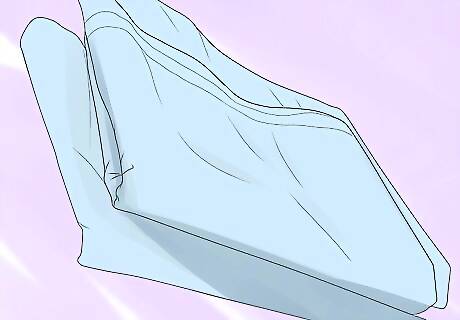
Cut a piece of duck cloth into sections. Cut 1 yard (91 cm) of duck cloth or canvas into 10-inch (25-cm) wide sections.

Gradually wrap sections of duck cloth around your waist. The lining will be formed from three pieces of 10-inch (25-cm) wide strips. Wrap the first section along the wearer's back. Attach two additional sections to the first at the spots on the right and left where a side seam would usually appear. Bring these two side sections together, bringing them around the front until each piece meets the side seam on the opposing side. Pin everything in place.
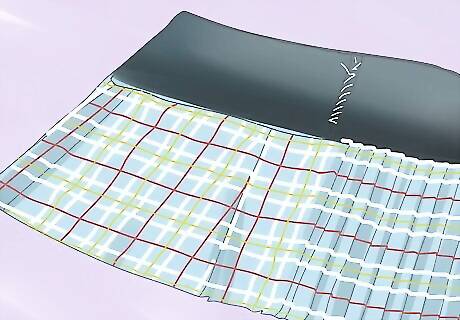
Stitch the lining to the waistband. Align the top edge of the lining to the inside top of the waistband and sew in place. Do an overlap stitch along the top inside of the apron to tack the lining to the kilt apron. Only the top needs to be attached. You do not need to sew the bottom of the lining to the outer apron. Note that the inside of the waistband will also be sewn under the lining, securing it in place.
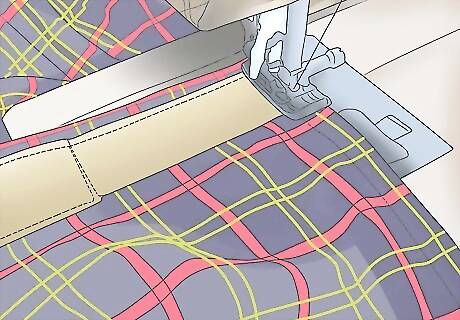
Hem the material. Fold the bottom edge of the lining under and sew a straight stitch along the material, hemming it in place. Do not sew it to the outer apron. You could also use anti-fraying adhesive liquid if you do not want to stitch the hem closed.
The Finishing Touches

Attach two thin belts to the inside of the kilt. You will need two leather belts that are roughly 1 inch (2.5 cm) in width and long enough to wrap around your waist. The first leather belt should go just below the waistband, on the underside of the kilt. The second leather belt should go just above the bottom part of the sewn-down portion of your pleats. Again, it should be on the underside of the kilt. Sew the belts in place. The leather portion of the belts should be attached to the lining while the buckle portions should be attached to the pleats.
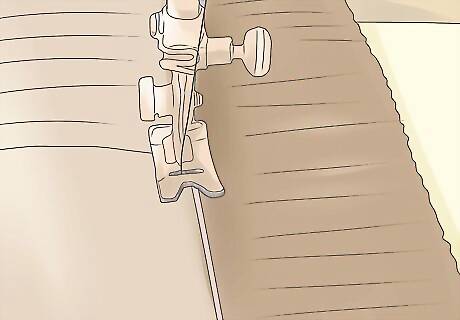
Stitch Velcro onto the apron. For additional support, sew a strip of Velcro onto the top of the apron. One half of the Velcro should be sewn across the top right of the front flap while the other half should be sewn to the top wrong-side of the left.
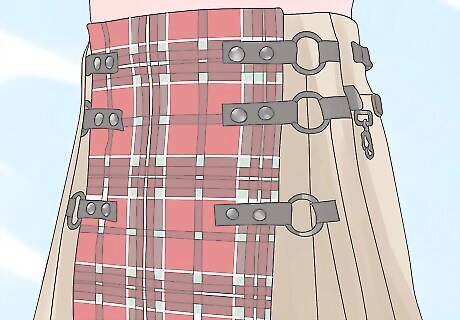
Wear the kilt. With this, your kilt should be complete. Wear it by wrapping the material around your waist and buckling the belts so that the material stays in place. Use the Velcro to add extra support so that your kilt stays firmly in place.




















Comments
0 comment